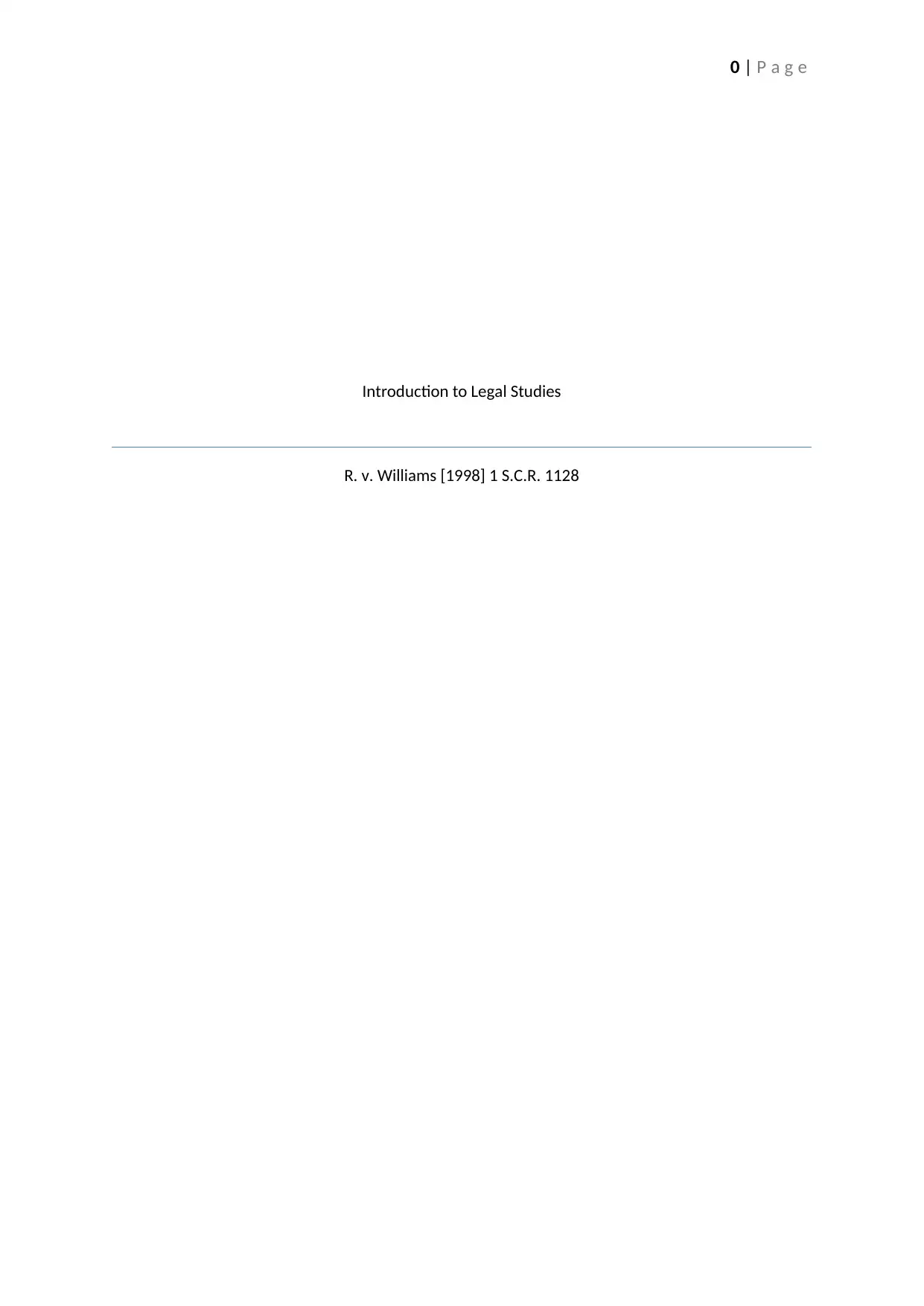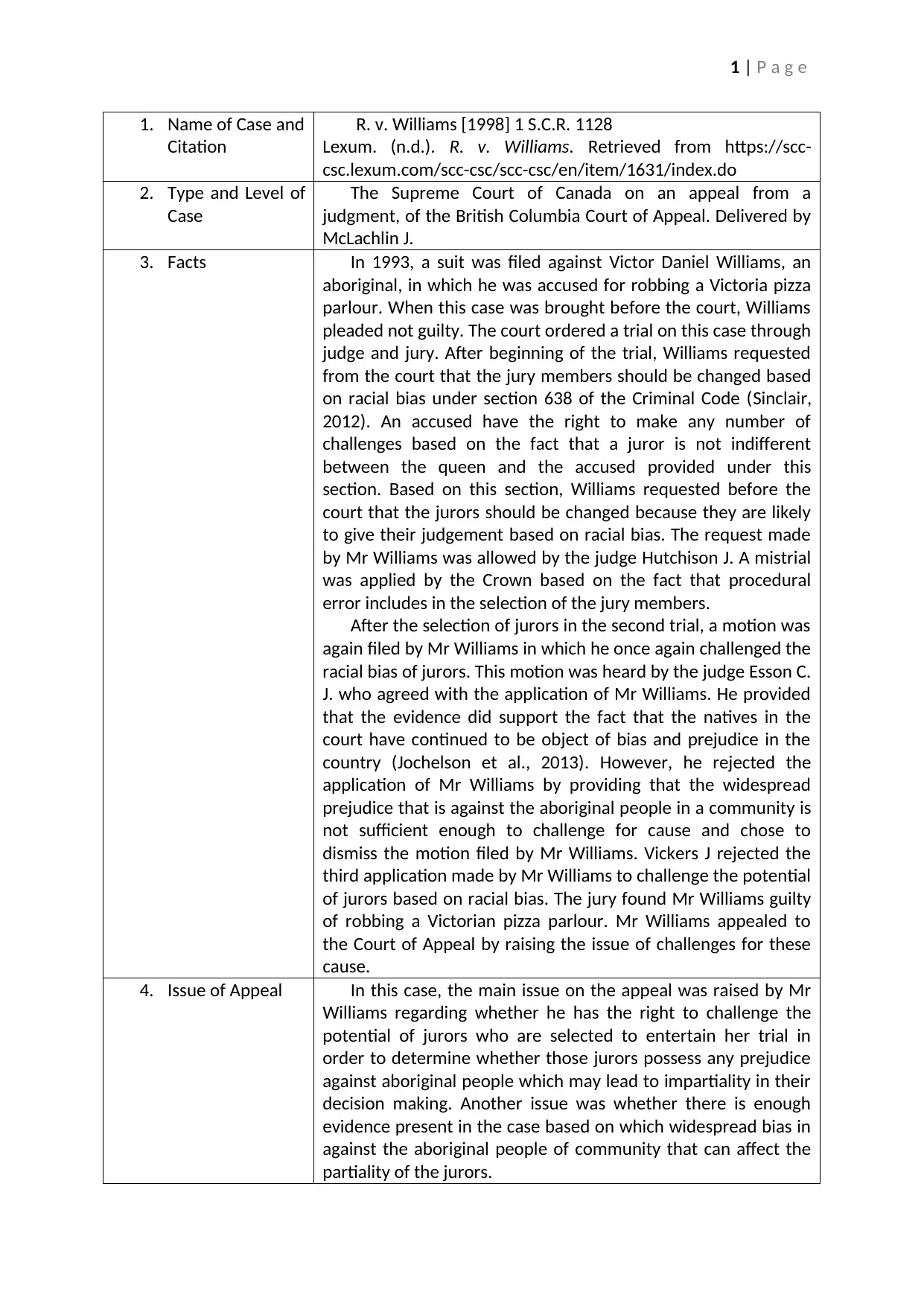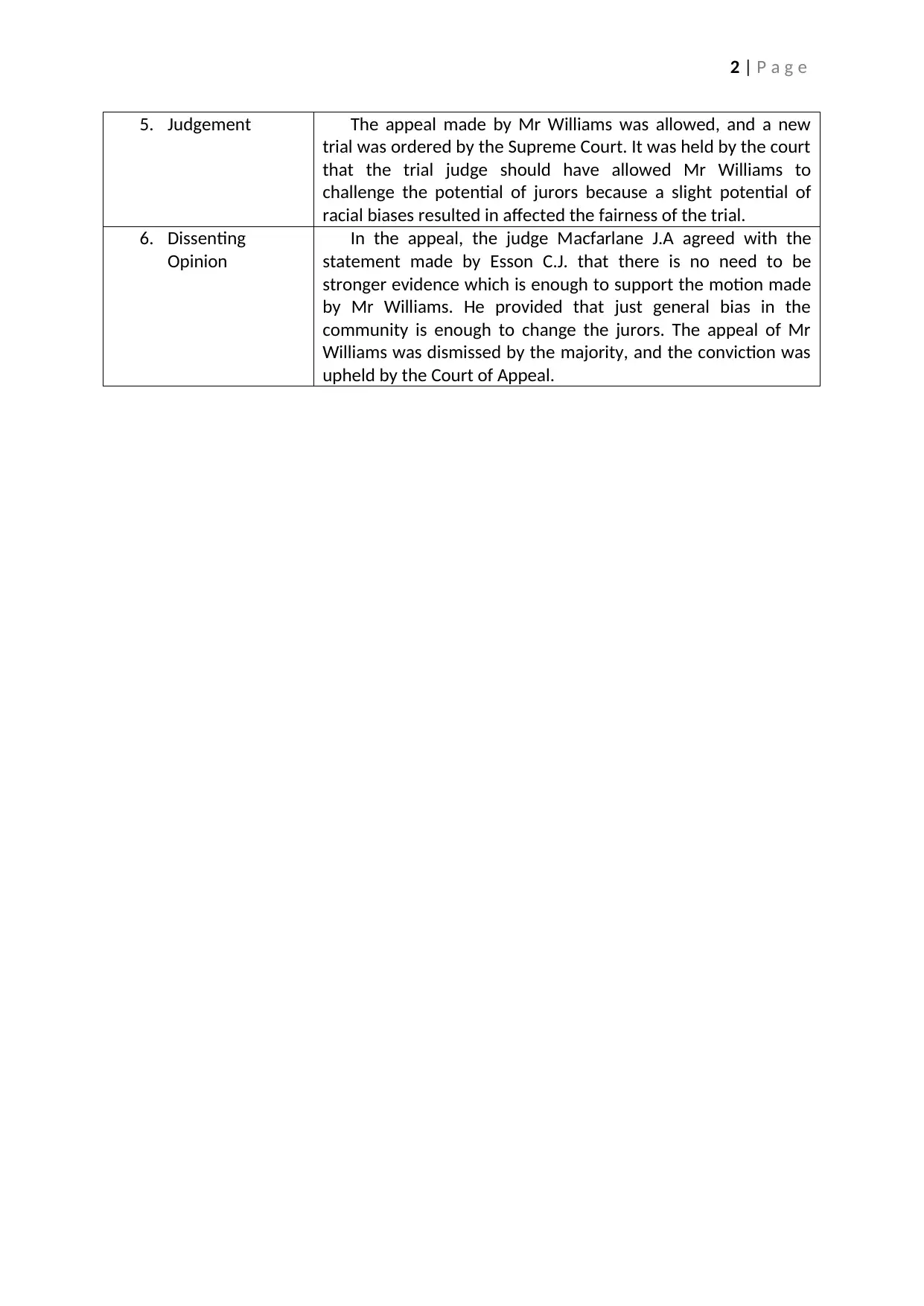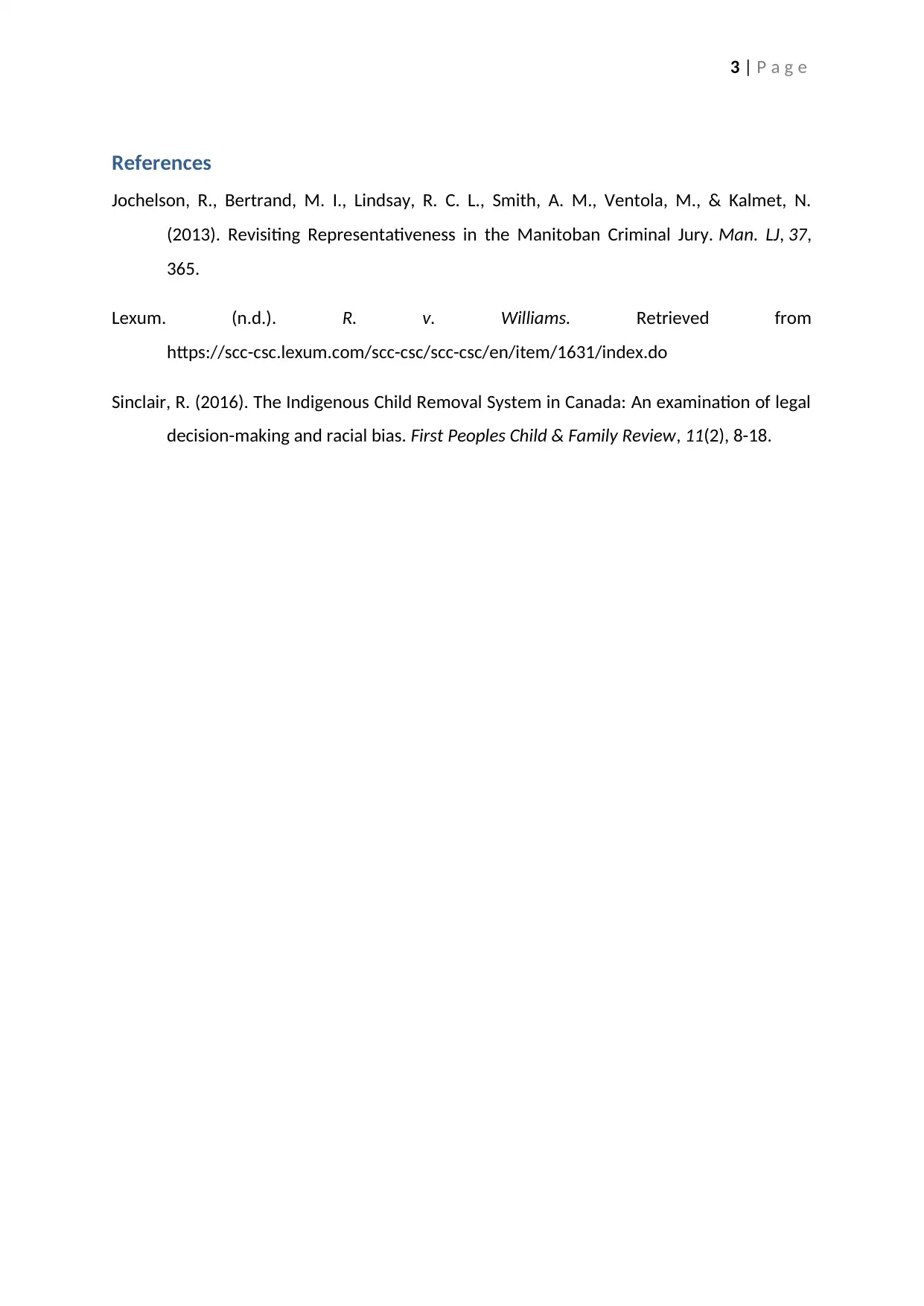Case Summary of R. v. Williams [1998] 1 S.C.R. 1128 - Legal Studies
VerifiedAdded on 2023/05/29
|4
|788
|70
Case Study
AI Summary
This case study summarizes R. v. Williams [1998] 1 S.C.R. 1128, a Supreme Court of Canada case concerning racial bias in jury selection. Victor Daniel Williams, an aboriginal, was accused of robbery and challenged the jury selection based on potential racial bias under section 638 of the Criminal Code. The initial judge allowed the challenge, but a mistrial was declared by the Crown. Subsequent challenges by Williams were rejected, leading to a guilty verdict. The central issue on appeal was whether Williams had the right to challenge jurors for potential prejudice against aboriginal people. The Supreme Court allowed the appeal, ordering a new trial, holding that even a slight potential of racial bias could affect the trial's fairness. The analysis includes facts, issues, judgment, and dissenting opinions, providing a comprehensive understanding of the case's legal implications.
1 out of 4





![[object Object]](/_next/static/media/star-bottom.7253800d.svg)